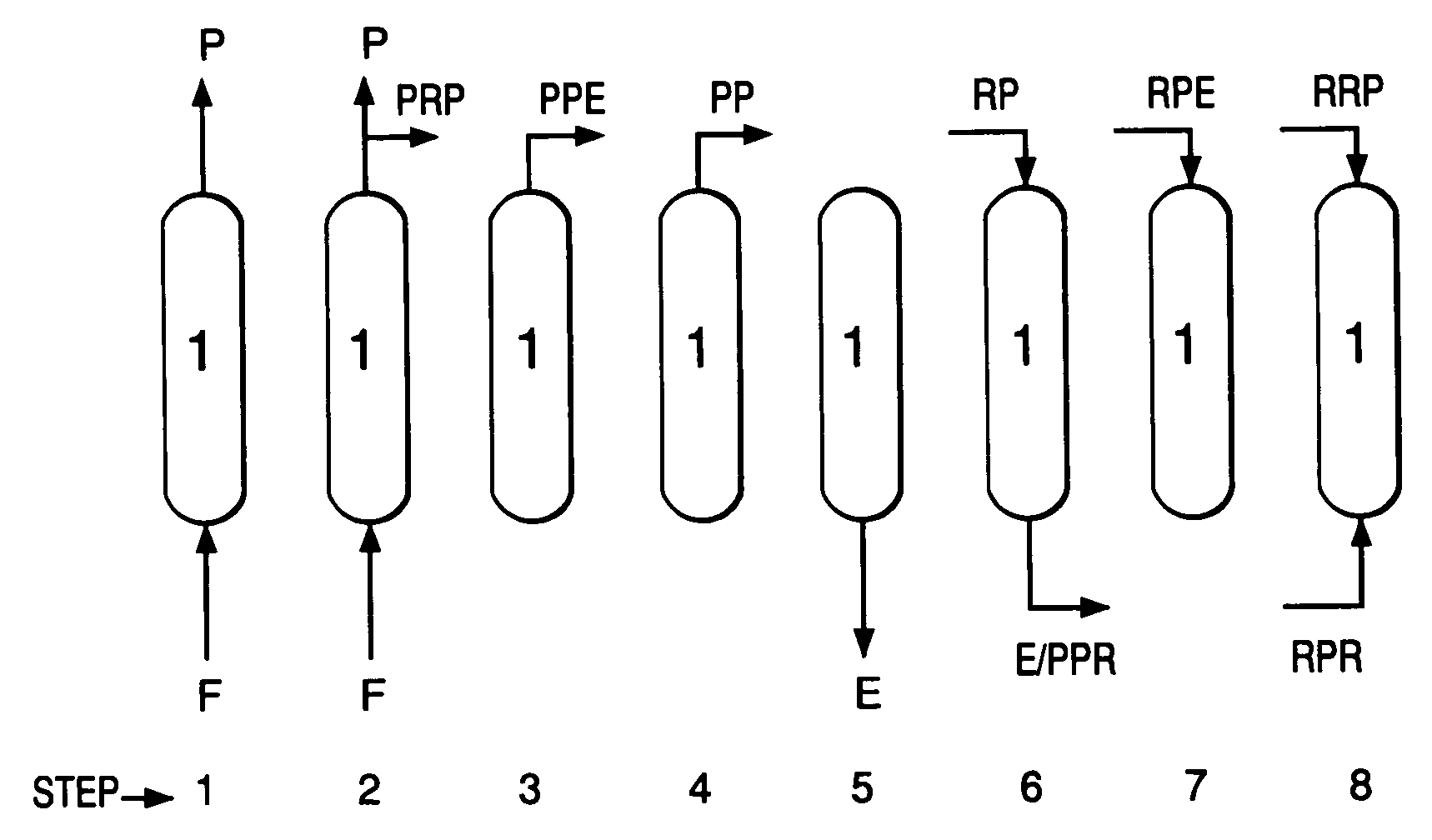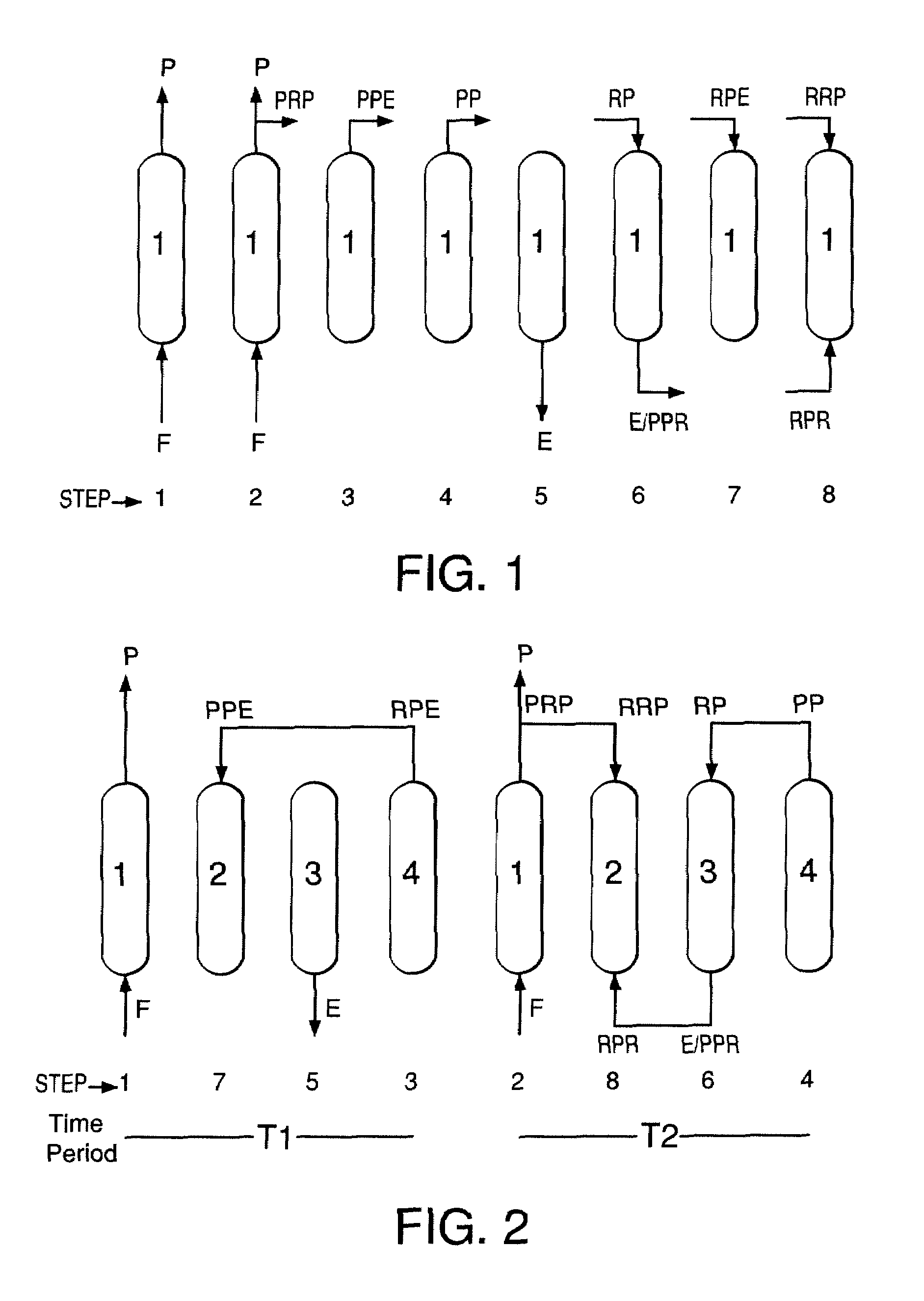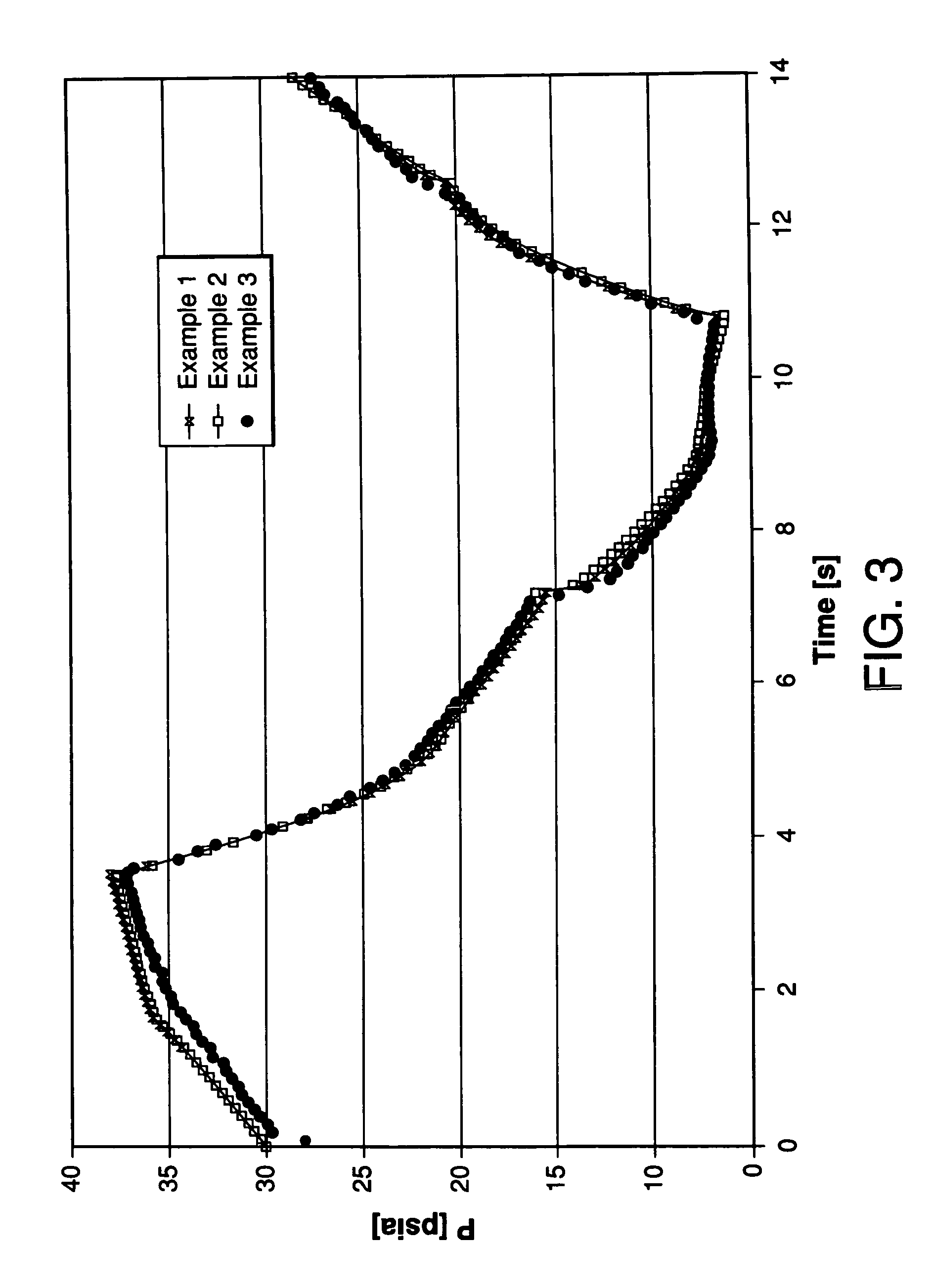Pressure swing adsorption process with improved recovery of high-purity product
a technology of high-purity products and adsorption processes, which is applied in the direction of separation processes, oxygen/ozone/oxide/hydroxide, dispersed particle separation, etc., can solve the problems of product recovery reduction
- Summary
- Abstract
- Description
- Claims
- Application Information
AI Technical Summary
Benefits of technology
Problems solved by technology
Method used
Image
Examples
example 1
[0059]A VPSA process was simulated using SIMPAC, which is a detailed adsorption process simulator. SIMPAC considers multicomponent adsorption isotherms, various mass transfer modes, numerous adsorbent layers, and general process flowsheeting. More details about SIMPAC are discussed in Kumar et al., Chemical Engineering Science, Volume 49, Number 18, pages 3115-3125. The cycle in this Example is similar to that described in Tables 1 and 2, but without purge repressurization, i.e., all purge gas effluent evacuated from a bed during step 6 is vented rather than being used to repressurize another bed. The purge repressurization stream in step 8 is replaced with an equivalent actual volume of feed gas to maintain a similar pressure history at the bed inlet end. Each cycle step has a duration of 1.75 seconds and the total cycle time is 14 seconds. Each of the four adsorbent beds has a diameter of 42.7 mm and contains a first layer at the feed end of inert material to represent adsorbent f...
example 2
[0061]The simulation of Example 1 was repeated for the cycle described in Tables 1 and 2 including the purge repressurization of step 8 rather than feed repressurization. The purge to feed ratio was similar at 3.30. The oxygen recovery increased to 23.43%.
[0062]The pressure profile at the inlet end of any given bed for Example 2 is given in FIG. 3.
example 3
[0063]A four-bed pilot PVSA unit was operated according to the cycle described in Tables 1 and 2 to obtain sample performance data for the cycle. Each cycle step had a duration of 1.75 seconds. The pilot unit consisted of 6 columns arranged in a circular pattern with banks of solenoid valves at the feed and product ends of each column. The valves connect to a metal cylinder inside the circle of columns. Channels were cut into the cylinder to insure equal flow paths between all columns. The unit was fully instrumented to confirm mass balance closure and provide temperature, pressure, and flow rate of the various streams. A programmable logic controller operated the cycle and logged the data. Each bed was contained in a column having an inside diameter of 42.7 mm. Four layers of adsorbent were installed in each column including a first layer at the feed end containing 20×28 mesh Alcan Activated alumina having a depth of 26 mm, a second layer containing NaX zeolite with an average part...
PUM
| Property | Measurement | Unit |
|---|---|---|
| vol % | aaaaa | aaaaa |
| vol % | aaaaa | aaaaa |
| temperature | aaaaa | aaaaa |
Abstract
Description
Claims
Application Information
 Login to View More
Login to View More - R&D
- Intellectual Property
- Life Sciences
- Materials
- Tech Scout
- Unparalleled Data Quality
- Higher Quality Content
- 60% Fewer Hallucinations
Browse by: Latest US Patents, China's latest patents, Technical Efficacy Thesaurus, Application Domain, Technology Topic, Popular Technical Reports.
© 2025 PatSnap. All rights reserved.Legal|Privacy policy|Modern Slavery Act Transparency Statement|Sitemap|About US| Contact US: help@patsnap.com



